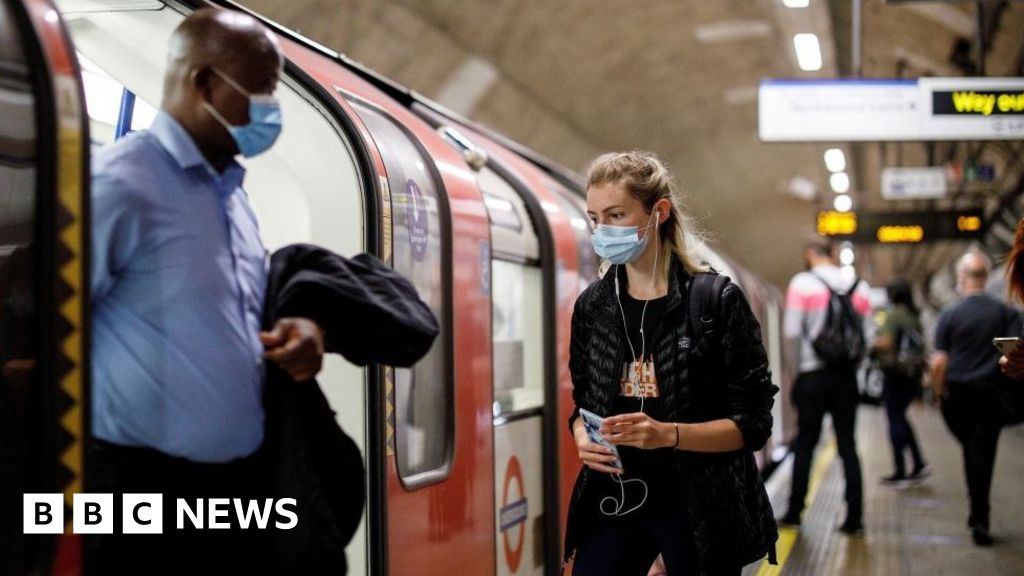'Nearly Two-thirds' Of Workers Commuting Again, Says ONS

 Image copyright
Getty Images
Image copyright
Getty Images
Nearly two in three workers are now commuting again, as some employers ask their staff to return to offices during the pandemic.
The Office for National Statistics (ONS) said that 62% of adult workers reported travelling to work last week.
That compares with 36% in late May, soon after the ONS began compiling the figures during lockdown.
The government has been encouraging workers to return to offices to help revive city centres.
While the proportion of people travelling to work has increased, the ONS said 10% of the workforce remained on furlough leave.
It added that 20% of workers continued to do so exclusively from home.
The commuter data includes people who may be travelling to work exclusively, or they may be doing a mixture of commuting and working from home, the ONS said.
Business groups have warned city centres could become "ghost towns" if more staff do not return, damaging small businesses that rely on passing trade from office workers.
However, new research released on Thursday by the Chartered Institute of Personnel and Development (CIPD) suggests that working from home could be a permanent fixture for many, following the pandemic.
According to the survey of 1,000 employers, 37% believe staff will regularly avoid the journey into the office following Covid-19 - up from just 18% before the pandemic.
CIPD chief executive Peter Cheese said: "The step-change shift to home working to adapt to lockdowns has taught us all a lot about how we can be flexible in ways of working in the future.
"Employers have learnt that, if supported and managed properly, home working can be as productive and innovative as office working and we can give more opportunity for people to benefit from better work-life balance."
However, he said it did not suit everyone and that organisations would have to design working arrangements around people's needs while "also meeting the needs of the business".
The ONS also found that about one in 10 workers are still furloughed under the government's job retention scheme. Under the scheme, workers placed on leave have been able to receive 80% of their pay, up to a maximum of £2,500 a month.
That level is likely to fall in coming weeks as the government has started to scale back the amount of money it pays out to furloughed workers.
Companies who want to furlough their staff have had to pick up at least 10% of the bill since the beginning of September. In October, they will have to pay 20%.
Almost 10 million workers have been furloughed since March, but the scheme is set to end entirely on 31 October.
From Chip War To Cloud War: The Next Frontier In Global Tech Competition
The global chip war, characterized by intense competition among nations and corporations for supremacy in semiconductor ... Read more
The High Stakes Of Tech Regulation: Security Risks And Market Dynamics
The influence of tech giants in the global economy continues to grow, raising crucial questions about how to balance sec... Read more
The Tyranny Of Instagram Interiors: Why It's Time To Break Free From Algorithm-Driven Aesthetics
Instagram has become a dominant force in shaping interior design trends, offering a seemingly endless stream of inspirat... Read more
The Data Crunch In AI: Strategies For Sustainability
Exploring solutions to the imminent exhaustion of internet data for AI training.As the artificial intelligence (AI) indu... Read more
Google Abandons Four-Year Effort To Remove Cookies From Chrome Browser
After four years of dedicated effort, Google has decided to abandon its plan to remove third-party cookies from its Chro... Read more
LinkedIn Embraces AI And Gamification To Drive User Engagement And Revenue
In an effort to tackle slowing revenue growth and enhance user engagement, LinkedIn is turning to artificial intelligenc... Read more

